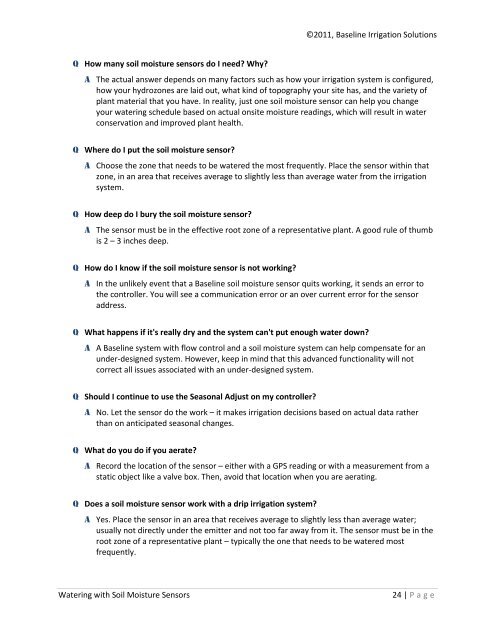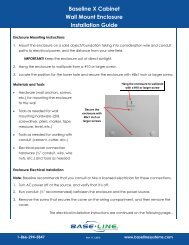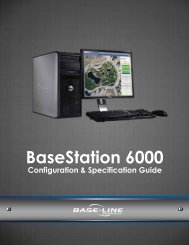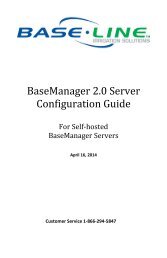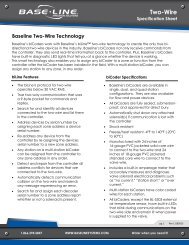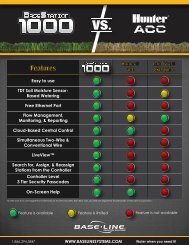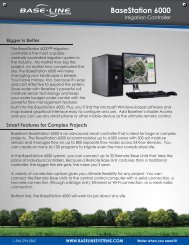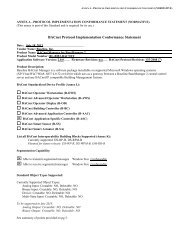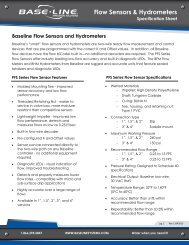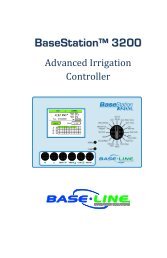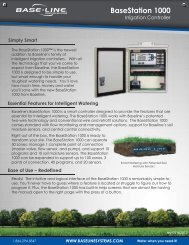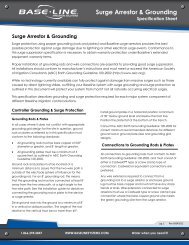Watering with Soil Moisture Sensors - Baseline Systems
Watering with Soil Moisture Sensors - Baseline Systems
Watering with Soil Moisture Sensors - Baseline Systems
Create successful ePaper yourself
Turn your PDF publications into a flip-book with our unique Google optimized e-Paper software.
©2011, <strong>Baseline</strong> Irrigation SolutionsQ How many soil moisture sensors do I need? Why?A The actual answer depends on many factors such as how your irrigation system is configured,how your hydrozones are laid out, what kind of topography your site has, and the variety ofplant material that you have. In reality, just one soil moisture sensor can help you changeyour watering schedule based on actual onsite moisture readings, which will result in waterconservation and improved plant health.Q Where do I put the soil moisture sensor?A Choose the zone that needs to be watered the most frequently. Place the sensor <strong>with</strong>in thatzone, in an area that receives average to slightly less than average water from the irrigationsystem.Q How deep do I bury the soil moisture sensor?A The sensor must be in the effective root zone of a representative plant. A good rule of thumbis 2 – 3 inches deep.Q How do I know if the soil moisture sensor is not working?A In the unlikely event that a <strong>Baseline</strong> soil moisture sensor quits working, it sends an error tothe controller. You will see a communication error or an over current error for the sensoraddress.Q What happens if it's really dry and the system can't put enough water down?A A <strong>Baseline</strong> system <strong>with</strong> flow control and a soil moisture system can help compensate for anunder-designed system. However, keep in mind that this advanced functionality will notcorrect all issues associated <strong>with</strong> an under-designed system.Q Should I continue to use the Seasonal Adjust on my controller?A No. Let the sensor do the work – it makes irrigation decisions based on actual data ratherthan on anticipated seasonal changes.Q What do you do if you aerate?A Record the location of the sensor – either <strong>with</strong> a GPS reading or <strong>with</strong> a measurement from astatic object like a valve box. Then, avoid that location when you are aerating.Q Does a soil moisture sensor work <strong>with</strong> a drip irrigation system?A Yes. Place the sensor in an area that receives average to slightly less than average water;usually not directly under the emitter and not too far away from it. The sensor must be in theroot zone of a representative plant – typically the one that needs to be watered mostfrequently.<strong>Watering</strong> <strong>with</strong> <strong>Soil</strong> <strong>Moisture</strong> <strong>Sensors</strong>24 | P age


